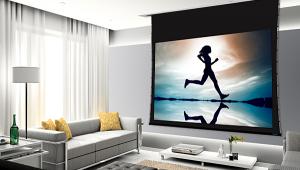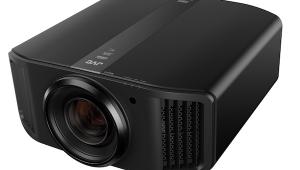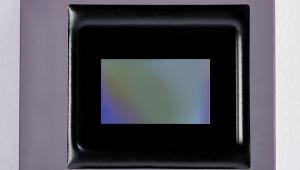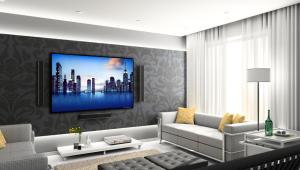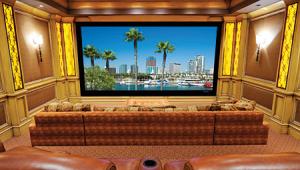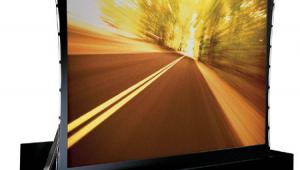Front Projector Technology Primer
I'd love to regale you all with stories of the CRT front projectors of yesteryear. These beasts were bigger than a VW, but cost a lot more. But that's not why I'm here. Thanks to the digital revolution, high quality front projection is now as affordable as premium rear projection TV in many cases, and less expensive than many premium flat screens.
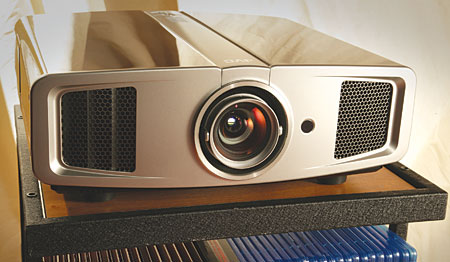
Two and half technologies currently dominate the front (and rear) projection market: LCD, Liquid Crystal on Silicon (LCoS), and DLP (Digital Light Projection). DLP is a technology developed and owned by Texas Instruments.
LCD and LCoS are related in that they both make use of liquid crystals (therefore the "half" in the "two and a half"). But they are also different in important ways. There are also proprietary variants of LCoS, such as JVC's D-ILA and Sony's SXRD.
Delineating all of the technical differences between these technologies would be enough to occupy several articles, so I want to focus here on practical differences. In very general terms, DLP is a reflective technology based on amazingly small micromirrors, while LCD is a "transmissive" technology, meaning that light is passed through rather than reflected off of the silicon substrate on the chip. LCoS can be thought of as something of a combination of the two, being a reflective liquid crystal technology- light is reflected off a mirrored surface beneath the liquid crystal substrate, passing through the liquid crystal layer twice.
The most obvious and important distinctions among these technologies for most consumers are in basic configuration, and in price.
LCD and LCoS projectors are exclusively three-chip designs, with separate chips handling red, green, and blue. As a result, LCD and LCoS projectors are always putting these three primary colors on screen in a continuous fashion.
DLP projectors, on the other hand, are predominantly single-chip designs that use a fast-spinning color wheel to emulate continuous color. This system works very well, but it's not perfect. Color separation "rainbow" artifacts can be seen occasionally in even the very best designs, and people vary in sensitivity to these artifacts.
Fortunately, looking at a single-chip DLP for just a few minutes will generally give you an idea of your sensitivity to the rainbows. If it's overwhelming, then you know to move on to three-chip designs.
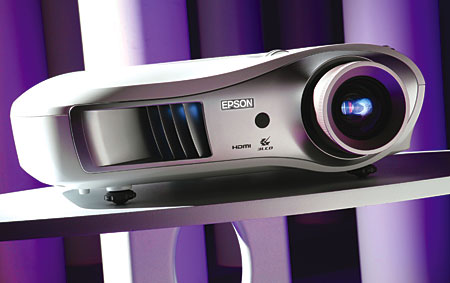
There are three-chip DLP designs, but they are exponentially more expensive than their single-chip counterparts. And for reasons unknown, the three-chip DLP designs we've seen have been optimzed for higher light output for very large screens more than good black levels and optimum contrast on reasonably sized screens.
However, while it would seem that three-chip LCoS designs would be more complex and expensive than their single-chip DLP competitors, this is not the case. The hottest, most competitive category in front projection (with the most potential for growth) is in 1080p models selling for under $5. And this market is currently dominated by LCD and LCoS designs. While single-chip 1080p DLP is inching closer to these price points, the options in LCoS and LCD are proliferating wildly.
Performance Characteristics
For a long time DLPs enjoyed a massive advantage in performance over LCD and LCoS designs by offering deeper blacks and therefore superior contrast ratio. This has changed in the last few years. While several new technologies are being used to reach this goal, the dominant one is a dynamic or auto iris.
A dynamic iris is a complex system that opens and closes a physical iris depending on the light levels of the scene- it closes the iris down on darker scenes and opens it up on brighter scenes. In the best systems there are also complex electronic adjustments involved.
The first dynamic irises that appeared a few years ago were not free of artifacts- most obvious were brightness compression during bright scenes or "pumping," which means the iris' operation is too visible during scene transitions. These systems generally superior now, invisible in operation to even trained eyes with most program material.
By using dynamic iris systems LCD and LCoS designs can equal or even surpass the blacks and contrast of the best DLPs. Many of the sub-$5K LCD and LCoS designs offer state-of-the-art performance in these critical areas.
